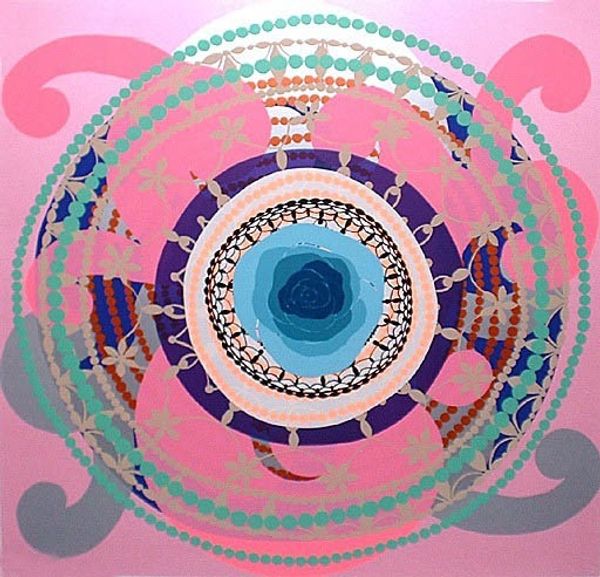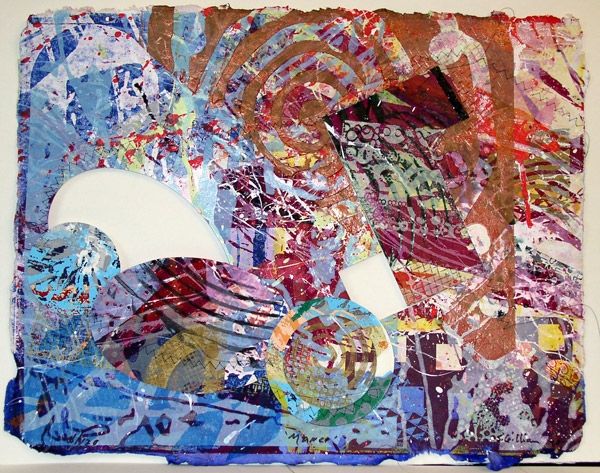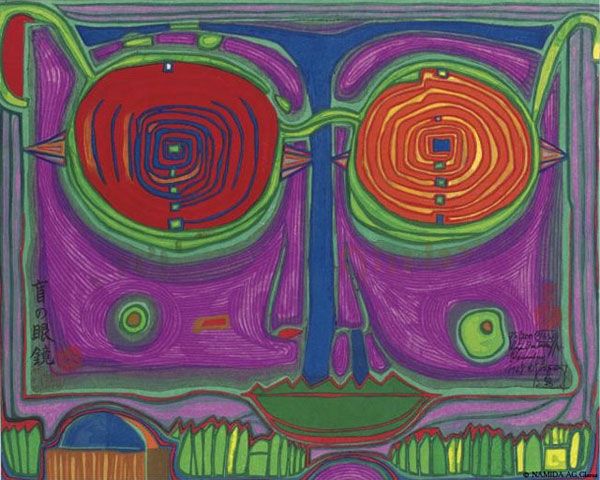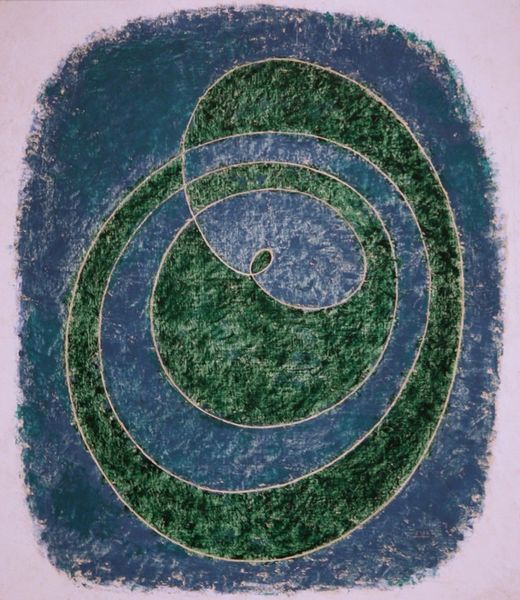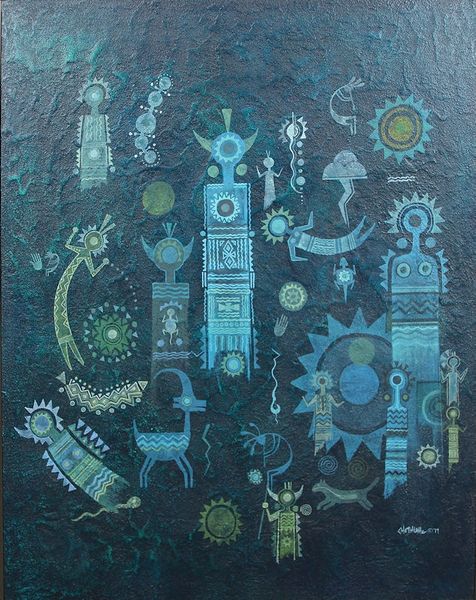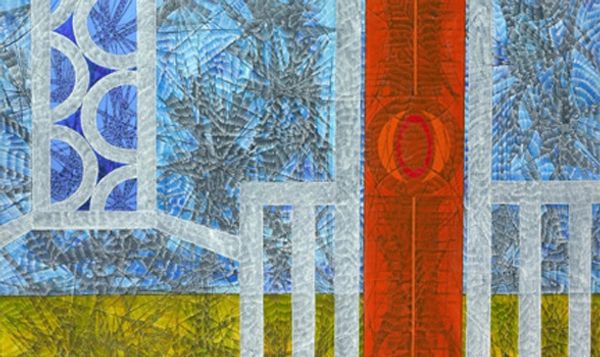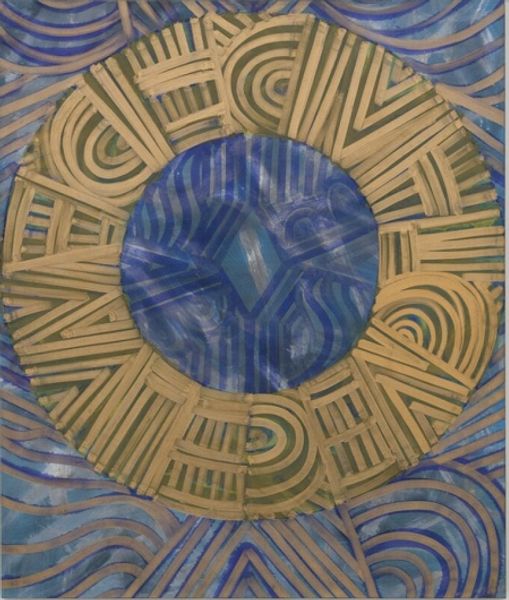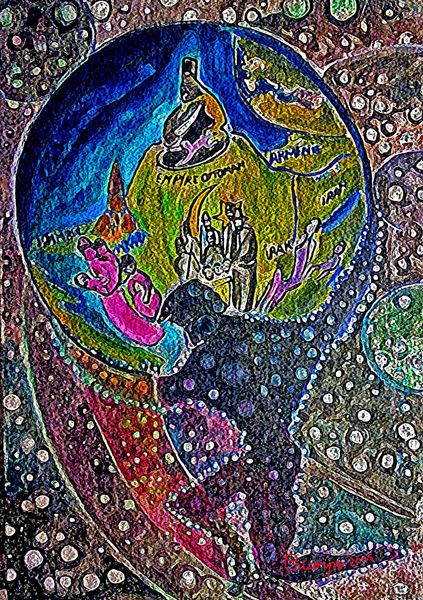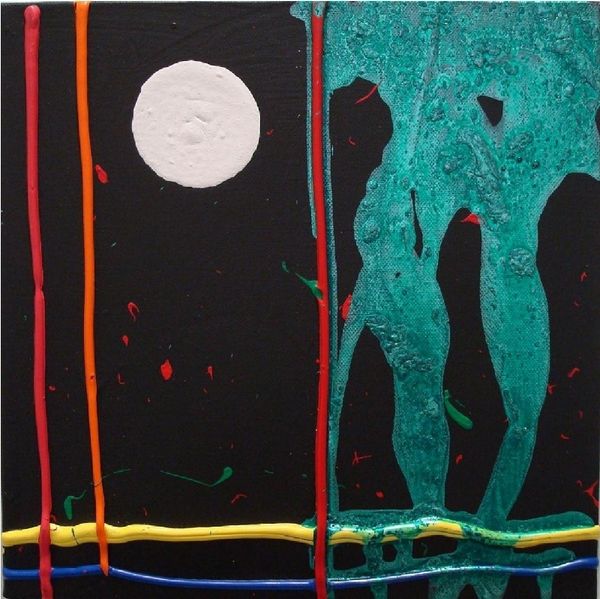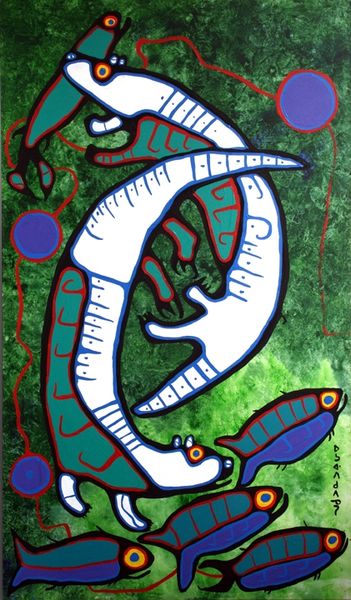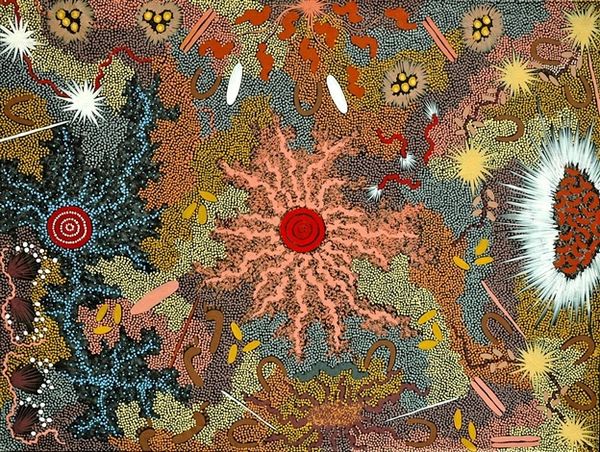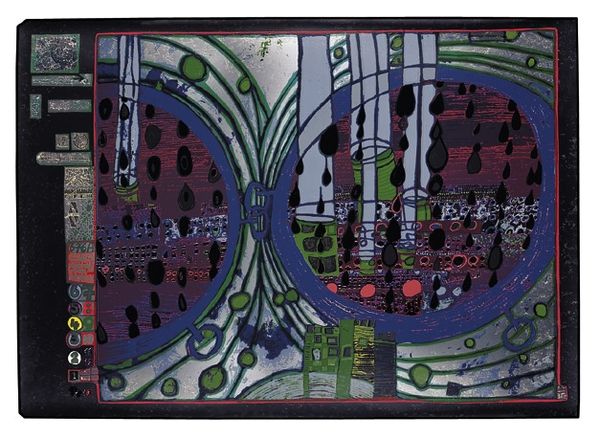
Copyright: Pierre Alechinsky,Fair Use
Editor: So, here we have Pierre Alechinsky’s "Astre Désastre" from 1969, done in mixed media. It’s certainly...busy, almost overwhelmingly so. There’s this central swirling vortex, and then a sort of frieze along the bottom with what look like doodled figures. What stands out to you in terms of what went into making it? Curator: For me, the magic is in the materiality. Look at how Alechinsky layers acrylic paint. See how the dense center contrasts with the rougher application around the edges and the distinct separation with that line in the bottom? This suggests a deliberate exploration of contrasting textures and techniques to disrupt the visual field. It’s about calling attention to the physicality of painting. How does the artist invite us to read the surface and its material properties? Editor: So, it's less about what's *depicted* and more about *how* it's depicted? Curator: Exactly. Think about the "naïve art" tag associated with it. Often, that points us towards a discussion on labor, right? Who decides what’s considered "skilled" versus "unskilled" in art production, and how do those labels affect the value assigned to certain types of making? Editor: I hadn’t thought about that connection. It seems to challenge traditional distinctions between fine art and what might be considered more craft-based or even child-like mark making. Curator: Precisely! The "graffiti art" tag furthers that argument. Think about the social context: 1969 was a time of significant social upheaval and re-evaluation of norms. To bring graffiti-like energy into fine art would have questioned the elite world of art and its processes. Can you feel the cultural revolution at play? Editor: I definitely see the connection now. The painting isn’t just an image, but it’s a record of a specific set of choices made by the artist during a specific time. Curator: And a prompt for us to question those choices. Ultimately, it prompts us to consider art as work, labor and social commentary, rather than something passively consumed. Editor: This has really changed my perception. Thanks for drawing my attention to the materials and their broader cultural context. Curator: Absolutely! It's amazing what focusing on materials and production can reveal about a work of art.
Comments
No comments
Be the first to comment and join the conversation on the ultimate creative platform.
